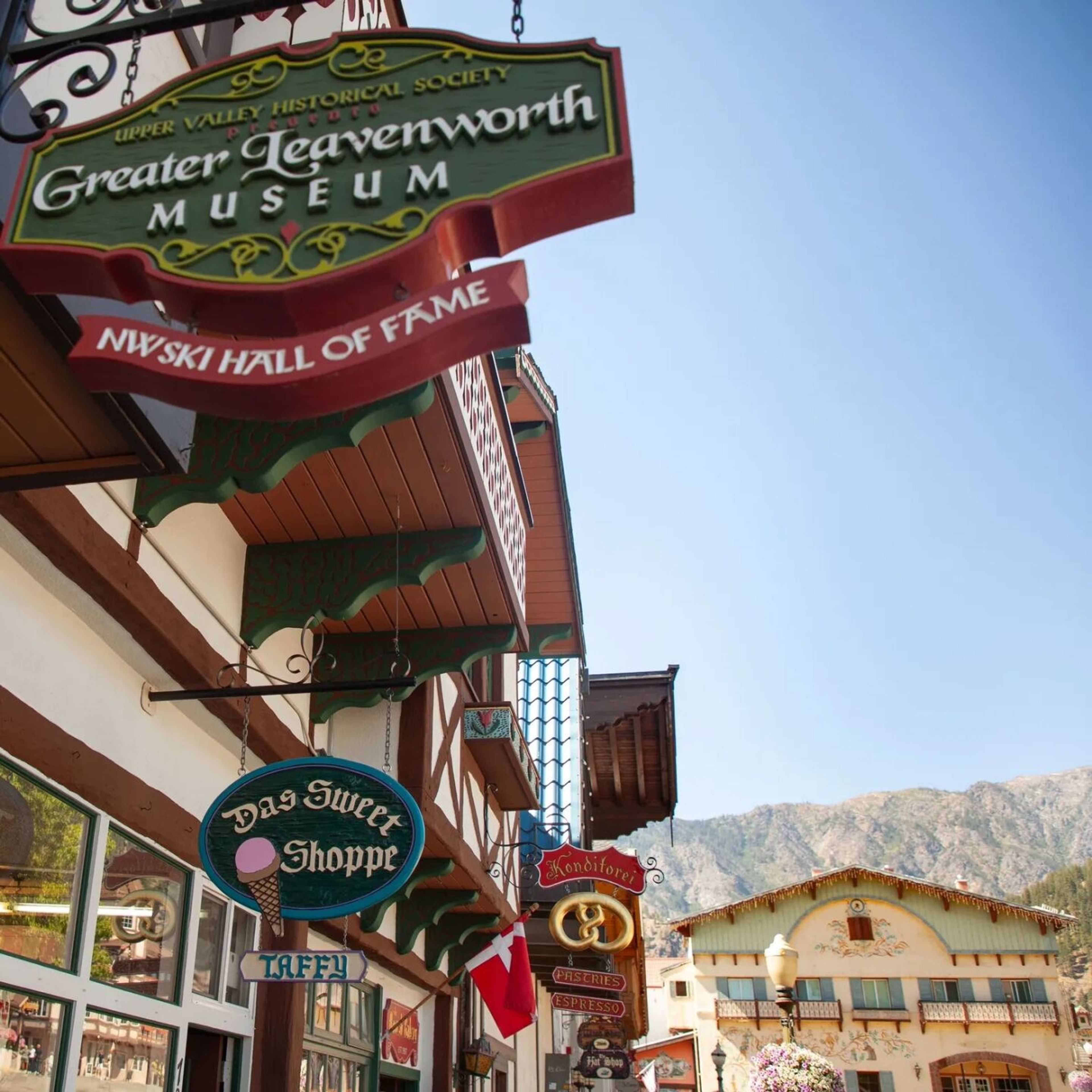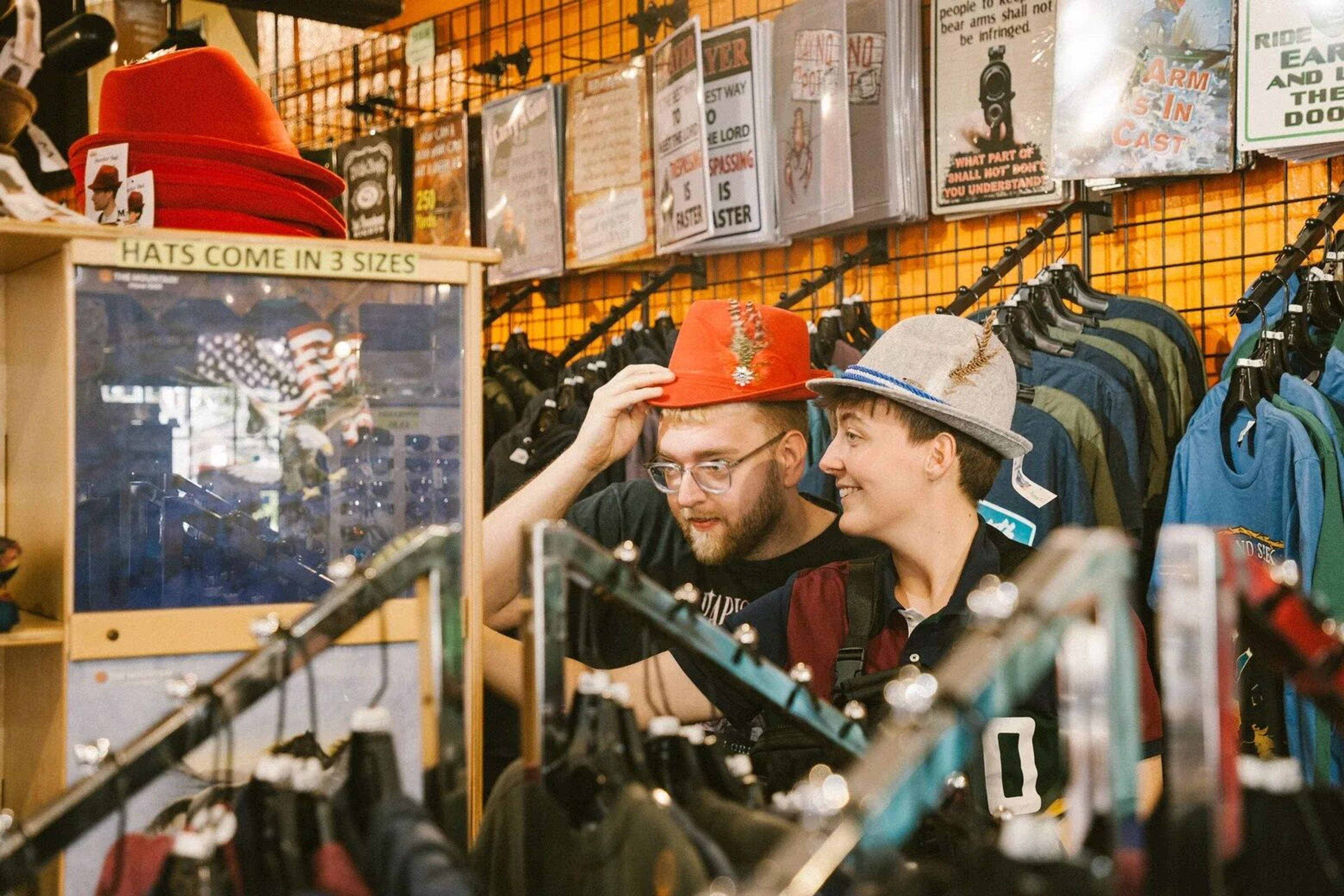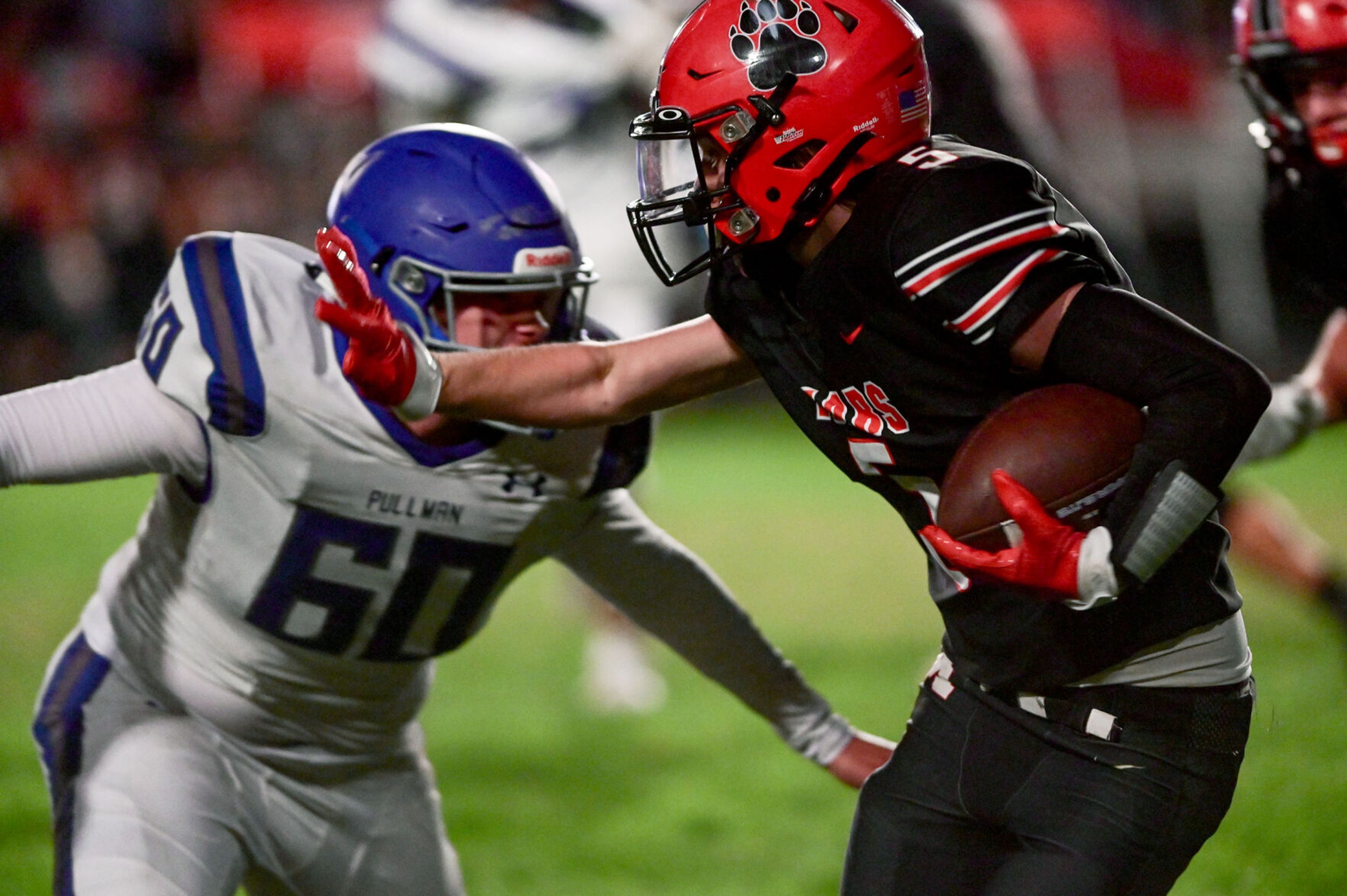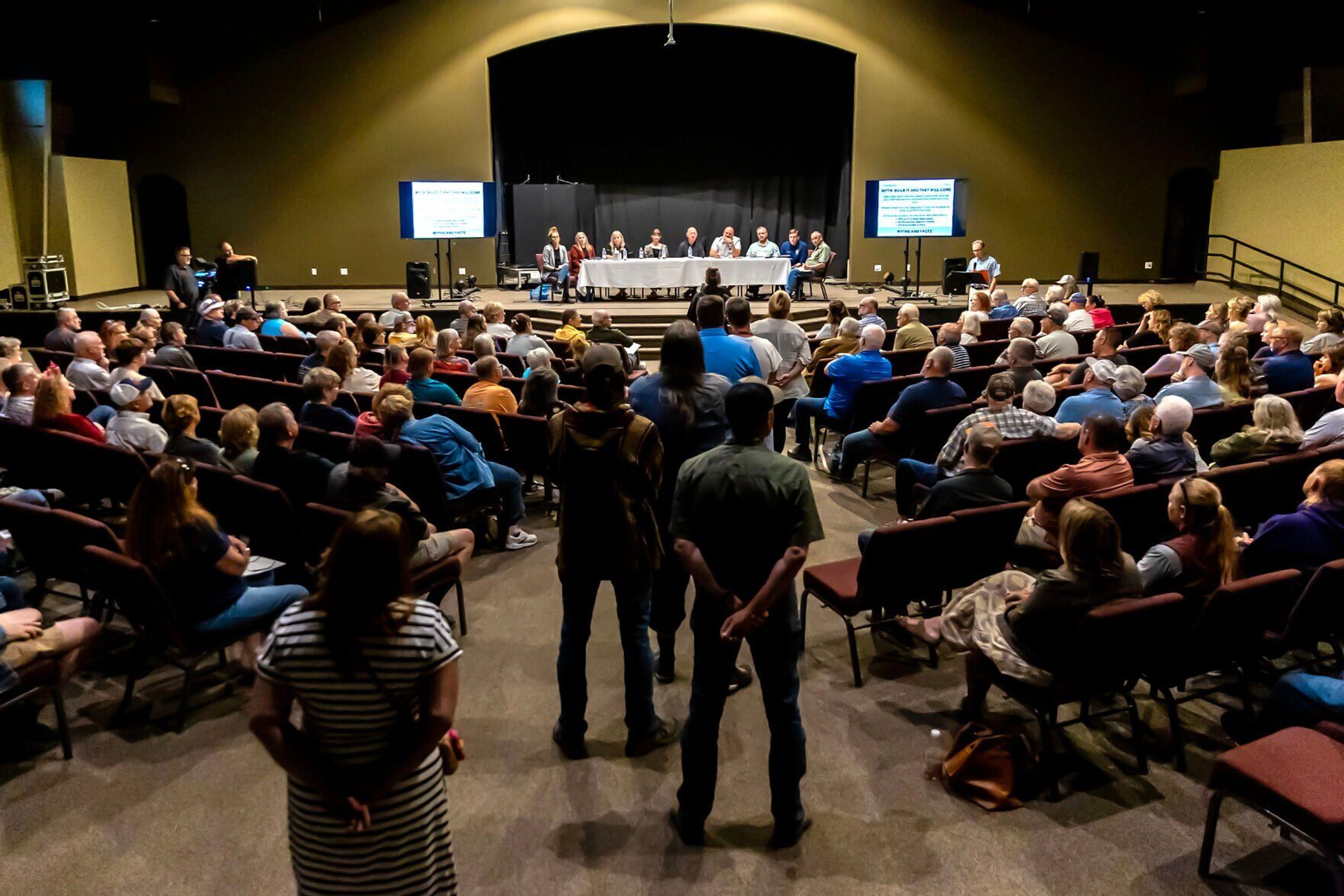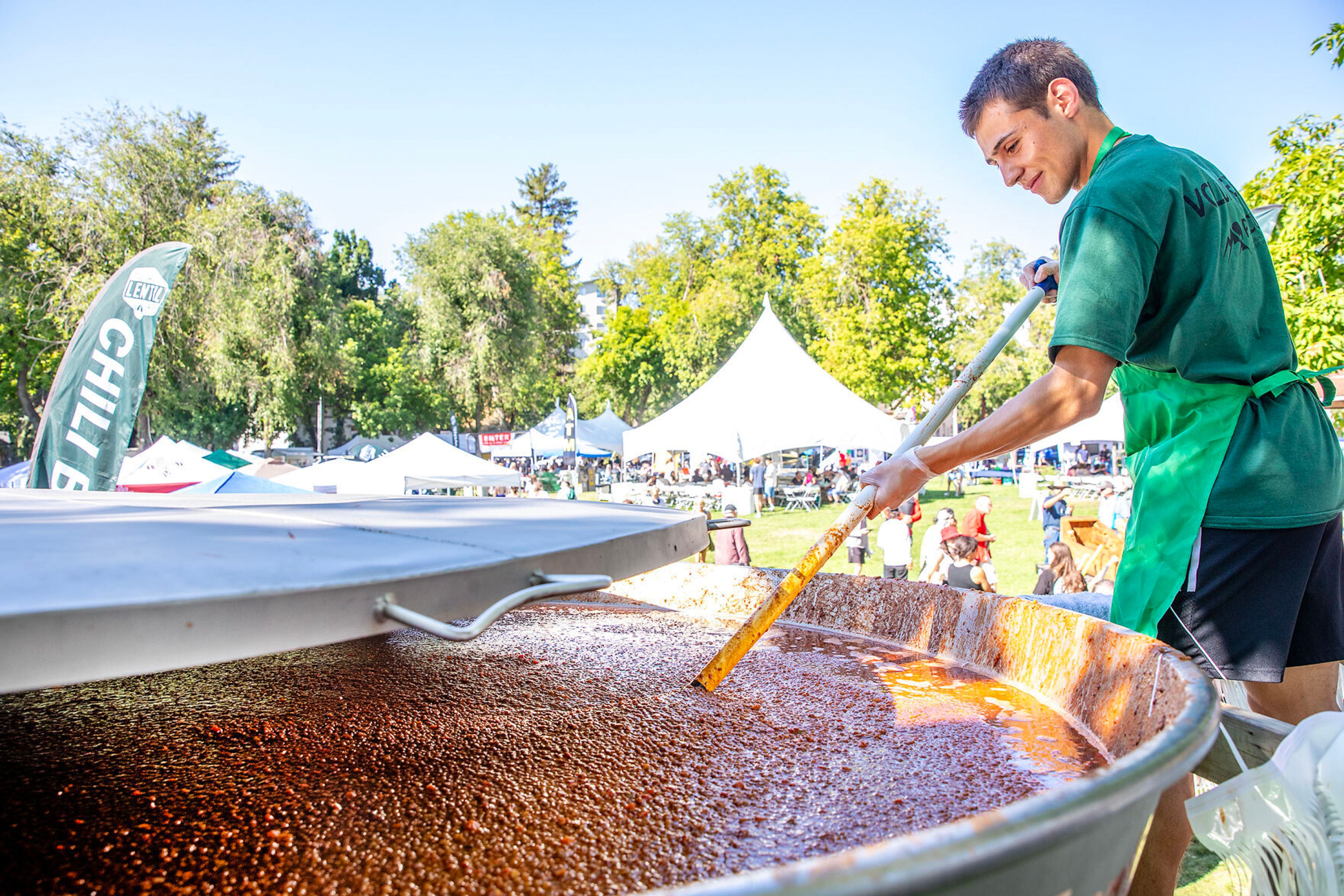Faux Bavaria: Who’s to balk?
Four Bavarians visit Leavenworth, WA, which has devoted itself to aping their colorful homeland
LEAVENWORTH, Wash. — Robert Baumann is sitting on a porch, wearing lederhosen and an Alpine hat. Majestic mountains contrast with the deep blue sky behind him.
He is talking about the fall of the Berlin Wall. His eyes fill with tears. A blue-and-white maypole stands next to the pavilion, where Baumann is about to give an accordion concert.
It could be a sunny afternoon in any Bavarian village, but the mountains in the background are not the Alps; they are the Cascades. And Baumann, a former German language teacher, has never actually lived in Germany and speaks the language with an American accent.
Welcome to Leavenworth, Chelan County: the closest to a visit to Bavaria that you can get in the U.S.!
Baumann travels here three times a year from Florida, to dress in lederhosen and play oompah songs on his accordion, becoming Bavarian for a few weeks.
We are a group of journalists living and working in Austria; two of us were born in Munich, the capital of Bavaria. Here in Seattle this summer, we attended a summer school at the University of Washington about solutions journalism, a story approach that usually does not include beer tasting.
Before we even landed, fellow travelers on the plane started to recommend a visit to the “Bavarian village up there.”
As journalists, we started our research: Was there a long-lost German community in the Cascades? An enclave, forgotten by its own ancestors?
But it was far easier: The whole Bavarian theme was a marketing ploy.
After an economic downfall in the early 20th century, Leavenworth introduced the Bavarian aesthetic and lifestyle in the 1960s to bring tourists to town. We were hooked immediately — could there be an authentic Alpine experience re-created in Washington state?
With typical German thoroughness, on a dreadfully hot Sunday in August, we make our way up to Leavenworth to inspect its Bavarianization.
Although the paintings, shop signs and balconies are beautiful to see, the structure of the town can’t fool us. Bavarian towns can mostly be traced back to the Bronze Age and were influenced by its Catholic churches, which stand at the center.
Narrow streets meander to a big market and church place. In Leavenworth, we recognize the American way of building a town. They often have a beautiful front to the big streets and a small back street with dumpsters, cords and fire ladders, arranged in a chessboard structure.
Easy to impress, but lacking details — even on Leavenworth‘s most photographed “Front Street.”
One sign above a shop catches our interest: Krampus Kave. We can’t help but wonder: Did the devil-like companion of St. Nicholas really make it to the Cascades?
The sometimes violent tradition spikes outrage even in Bavaria and Austria, where it has been around for centuries.
Nevertheless, Krampus conventions with hundreds of men dressing up as devil-looking furry figures are as popular as ever. In Leavenworth’s Krampus Kave, we don’t meet any masked men trying to scare us, but we meet Joe Seguin, who runs the shop that is basically a comic store with some masks and Krampus memorabilia on top.
“I have a costume myself,” Seguin tells us. “But not like the real ones from Germany, they are just too expensive.”
We learn that there is even a Krampus group in Seattle — but apparently, they can’t have their gatherings in Leavenworth anymore.
“We got some death threats from a church group in Idaho,” Seguin explains. From our European perspective, the idea of a church group canceling Krampus is odd. Churches in Bavaria and Austria appreciate this Christmas tradition to be followed.
Leaving the Kave, we are starting to realize that Bavaria and Christmas might be somehow connected for Americans. We stumble into the largest Christmas store any of us has ever seen.
In a different part of the store, we see shiny macaroni and cheese and sushi roll tree decorations. Back home, our Christmas is Americanized by Santa Claus and Mariah Carey.
But more than 5,000 miles from home, immersed in these Christmas markets, we pulled out our phones and learned about the origin of ornaments. They were found in southeast Germany in the early 16th century and only spread worldwide centuries later.
Dick has never visited Germany herself, although she drives into “little Bavaria” Leavenworth every day.
Nevertheless, she also likes to leave in the evenings.
“It gets very crowded here, especially around Christmas,” she says.
Observing the swarming shoppers here in the middle of summer, we can only imagine. Oktoberfest is the second-busiest time, so busy that visitors are charged $40 to enter the town.
Talking to several visitors in Leavenworth, we realize a lot of them — like Dick — have never been to the “real” Germany.
Data from the Pew Research Center from 2023 shows that 1 in 4 U.S. citizens have never even left their home country. We are starting to realize why attractions like Disney World or even Las Vegas with its international look-alike aesthetics and fake Eiffel Tower are so popular. Compared to that, Leavenworth even seems quite authentic.
We make our way through the busy streets of Leavenworth. Wherever we look, it feels irritatingly familiar and completely strange at the same time.
Turning your head from the surprisingly detailed painting of the Zugspitze mountain, there is a restaurant promoting pizza in a cone.
In the shop where they sell authentic beer mugs, they also have signs promoting gun possession.
We enter the heart of Leavenworth’s touristic body: the Nutcracker Museum. Arlene Wagner, who donated the collection of nutcrackers, slowly wanders through the corridors.
“We have about 9,000 nutcrackers here — that is a world record,” she tells us, showing us the framed Guinness World Records certificate. Traditional nutcrackers in soldier uniforms stand next to nutcracker quarterbacks in Seahawks jerseys.
Back on Front Street, we came across another guy from Germany, the only one other than ourselves that we’ve met in this town today.
He is asking at the visitor center about the most authentic German food in Leavenworth. Hopefully a schnitzel or a currywurst, he says.
The woman behind the desk wears a dirndl dress like MaryAnn Dick and sends the German tourist and his family to the restaurant Ludwig’s.
We are familiar with the need to prove the authenticity of what is offered here. What we already expected: America is not the best place to find good German baked goods, especially the beloved German pretzel, known in Bavaria as brezn. We simply could not accept that the American version had an additional doughy twist.
From now on, we will rate the drinks and food in Bavarian “brezn metrics.” The brezn itself only got 2 out of 5. The Bavarian waffle got kicked out of the rating because we have no equivalent to compare with and it was way too sweet for German teeth.
We were overwhelmed by the choice of toppings coming with the sausages. We choose a Bratwurst with coarse mustard and sauerkraut and a currywurst with ketchup and onions. In Berlin, the currywurst is served cut into slices and drizzled with a special tomato-curry sauce.
In the Leavenworth version, the sausage has curry as an ingredient, which we think is quite smart because the yellow turmeric in our sauce is responsible for many stains. And sauerkraut as a topping is just genius. In Germany, this is a side dish, and we feel that it’s heretical to put a side dish on top of something. Both sausages gain ratings of 3.5 brezn.
The beer is tasty — the best we had tasted in the U.S. so far — and would be accepted in any German “wirtshaus.”
But we deducted 1 brezn because the beer was served in a lemonade glass and not a stein. Sipping our beers, we discuss if Leavenworth passes as “authentic.”
Next to us, someone puts jalapeños on their bratwurst. A woman in her 30s has to show her ID to purchase a beer. This would never happen in Bavaria, where the legal drinking age for beer is 16.
But all of them are having a great time, and Leavenworth is thriving. So does it even matter?
